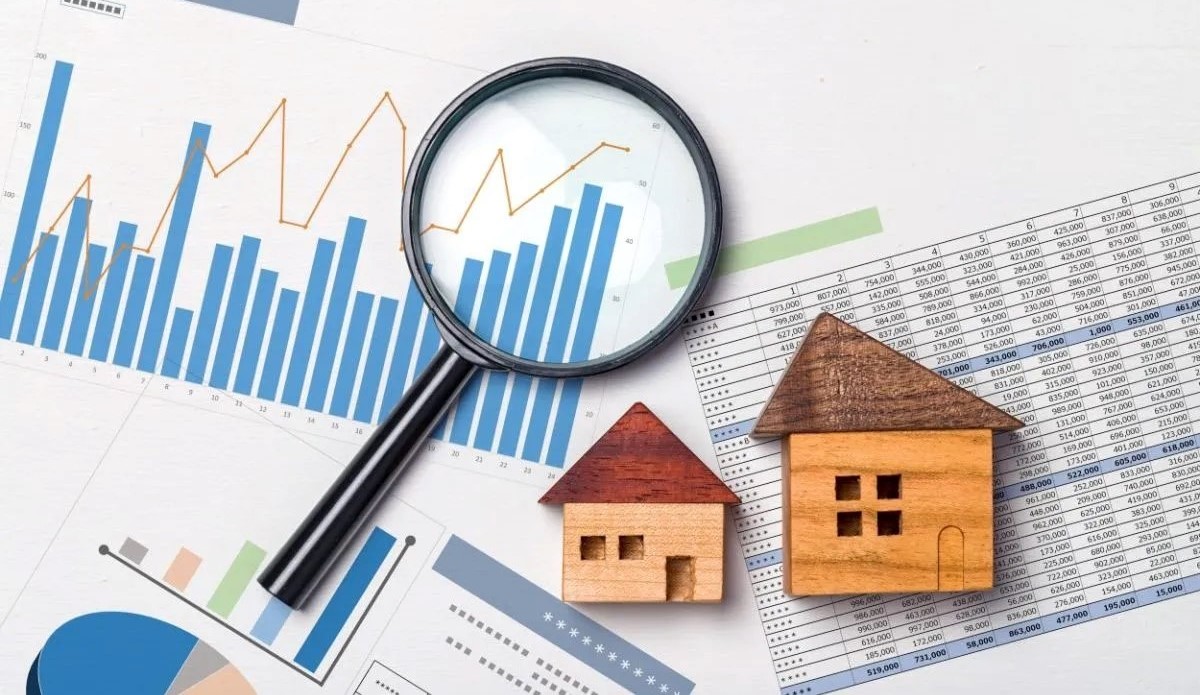Are you a Chicago homeowner grappling with the challenge of selling your old home while eyeing your next dream house? You’re not alone. Transitioning from one home to another often involves a delicate balance of timing and finances, especially in a market where inventory is scarce and prices are soaring.
Imagine you find your ideal home in Chicago but are stuck in a predicament. Selling your current home first means you might have to move twice – first to a temporary location, then to your new home. It’s a daunting prospect, but what if there’s a smoother path?
Enter the bridge loan. This short-term financing option could be the key to securing your new home before you sell your old one. It might be the missing piece in your home-buying puzzle, offering a seamless transition between selling and buying.
Yes, You Can Buy Before You Sell. Why Move Twice?
Through our Buy Before You Sell program, HomeLight can help you unlock a portion of your equity upfront to put toward your next home. You can then make a strong offer on your next home with no home sale contingency.
DISCLAIMER: As a friendly reminder, this post is intended for educational purposes, not financial advice. If you need assistance navigating the use of a bridge loan in Chicago, HomeLight encourages you to reach out to your own advisor.
What is a bridge loan, in simple words?
A bridge loan, often known as a swing loan, bridging loan, or gap financing, is a financial tool designed to help you during the transition of purchasing a new home while still owning your current one. Think of it as a bridge connecting your current home to your next one. This type of loan leverages the equity in your existing home, providing you with the necessary funds for a down payment and covering closing costs on your new property.
While bridge loans are generally pricier than traditional mortgages, they offer a significant advantage: speed and convenience. They allow you to swiftly secure your new home in Chicago without the pressure of waiting for your old home to sell. This can be a game-changer in a fast-moving real estate market, ensuring you don’t miss out on your dream home due to timing issues.
How does a bridge loan work in Chicago?
A typical scenario where you might find a bridge loan useful is when you’re ready to purchase your new home, but your current one hasn’t sold yet. In this situation, the equity from your previous home comes to the rescue, helping to cover the down payment and closing costs for your new Chicago property.
Often, the lender working with you on your new mortgage will also manage your bridge loan. They usually require that your current home be actively listed for sale. A bridge loan, which provides a temporary financial cushion, lasts from six months to a year.
An important factor in this process is your debt-to-income ratio (DTI). Lenders will calculate this by considering the mortgage payments on both your old and new homes and any interest-only payments on the bridge loan. This calculation helps lenders assess your ability to manage payments on both properties simultaneously, especially if your current home doesn’t sell immediately.
In some cases, if your existing home is under contract and the buyer has secured their loan approval, lenders might only factor in the mortgage payment of your new home when calculating your DTI. This flexibility can be a significant relief, ensuring that your financial commitments are manageable while transitioning from your old home to your new one in Chicago.
What are the benefits of a bridge loan in Chicago?
Bridge loans in Chicago offer several advantages that can make your home-buying experience more flexible and less stressful. Here are some key benefits:
- Make a non-contingent offer: With a bridge loan, you can make a non-contingent offer on your new home, making your bid more attractive to sellers.
- Avoid the hassle of a double move: You only need to move once, directly from your old home to your new one.
- Make your current home ready for the market: After moving out, you can prepare your old home for sale more effectively, including staging and renovations.
- Maximize deferred payments: Some lenders offer bridge loans with no payments required during the loan period.
- Act quickly on your dream home: You can move quickly on purchasing a new property without the sale status of your current home holding you back.
These benefits make a bridge loan a particularly appealing option for Chicago buyers who need financial flexibility before selling their previous home. They can settle the bridge loan with the proceeds from the home sale.
What are the drawbacks of a bridge loan?
While bridge loans offer significant advantages in certain situations, it’s important to know their potential drawbacks. Here are some key considerations:
- Incur additional loan costs: Expect underwriting fees, origination fees, and other costs associated with securing a bridge loan.
- Face increased financial burden: Managing payments for up to two mortgages plus a bridge loan, even if interest-only, can be financially challenging.
- Navigate stricter qualifying criteria: Qualifying for a bridge loan can be more difficult than for a traditional mortgage.
- Deal with a potentially slow underwriting process: The underwriting process for a bridge loan might take longer than you anticipate.
- Meet stringent equity eligibility criteria: Your qualification depends on the equity in your current home. Owing more than 80% of its value could be a disqualifier.
When is a bridge loan a good solution?
A bridge loan isn’t always the go-to solution for every real estate situation, but in certain scenarios, it can significantly ease the stress of moving from your old home to a new one. Here are some instances where a bridge loan might be particularly beneficial:
- You need the equity from your current home to make a down payment on a new one.
- Affording a double move and interim housing is challenging, and synchronizing the sale and purchase timelines is crucial.
- Your ideal home has just come on the market, and you need to act fast to avoid competitive delays.
- Your offer’s home sale contingency has been a stumbling block, and you need immediate purchasing power.
- Selling an empty or staged home is your goal, which can often be more profitable and easier to manage. This is particularly relevant if you cannot prepare or stage your current home for sale while still living in it. An unoccupied home can be more appealing to buyers and easier for real estate agents to show.
What’s required to get a bridge loan in Chicago?
To qualify for a bridge loan in Chicago, you typically need to meet the following criteria:
- Qualifying income: Lenders will assess your income to ensure you can manage your current and new mortgage payments and potentially an interest-only payment on the bridge loan.
- Sufficient equity: You must have at least 20% equity in your current home, though some lenders may require up to 50%.
- Good credit history: A favorable credit score, usually above 650, is often necessary. Your score influences your interest rate and other factors like loan-to-value ratio. If you have a good payment history, consider checking with your current mortgage lender for bridge loan options.
- Currently listed home for sale: Some lenders may require that your existing home is on the market, ensuring it’s likely to sell before the bridge loan term ends.
How much does a bridge loan cost in Chicago?
In Chicago, the cost of a bridge loan typically carries a higher interest rate compared to a standard mortgage. You can expect interest rates to be about 1 to 3 percentage points higher than those for a conventional mortgage loan. Additionally, bridge loans often come with extra transaction fees.
The reason for the higher costs associated with bridge loans is the increased risk to lenders. As a borrower, it’s crucial to consider the possibility that your home may not sell within the expected timeframe. If this happens, you need to be financially prepared to handle payments on both your mortgage and the bridge loan simultaneously.
The specific rate you’ll get largely depends on your creditworthiness and the lender you choose.
How to reduce bridge loan costs
Applying for a bridge loan with the same lender as your new mortgage can lead to cost savings. In such cases, you might not need to pay additional underwriting or other mortgage fees, as both your bridge loan and new mortgage will be processed together.
It’s advisable to shop around and compare options. Remember, bridge loans are meant as a short-term solution. Evaluate what financing option suits you best, considering not just the total costs but also convenience and suitability for your situation. We’ll explore more options in a later section.
Budget for closing costs
You should also budget for closing costs, legal, and administrative fees. These costs typically range from 1.5% to 3% of the loan amount and may include:
- Appraisal fee
- Administration fee
- Escrow fee
- Title policy costs
- Notary fee
- Loan origination fee
These fees add to the overall cost of the loan, so it’s important to factor them into your financial planning.
Bridge loan cost example
Below is an example of how much a $200,000 bridge loan might cost, along with possible fees.
You find a home you’d like to purchase, but you’re still waiting for your current Chicago house to sell. The new home’s asking price is $400,000. You can only come up with $200,000, but you have at least another $200,000 worth of equity in your current property. You want to access that money to cover the shortfall before your new home is sold to another buyer.
| Net loan amount | $200,000 | $200,000 |
| Interest (varies) | 10% (example for 6 months) | $10,000 |
| Origination fee | 1.5% | $3,000 |
| Underwriting fee | $1,000 | $1,000 |
| Appraisal fee | $700 | $700 |
| Closing cost* | 2% | $4,000 |
| Total repayable amount | $218,700 |
*These closing costs typically range between 1.5%-3%
What's Your Current Home Worth?
As you make plans to buy a new home, get a value estimate on your current house from HomeLight for free. Our tool analyzes records of recently sold homes near you, your home’s last sale price, and other market trends to provide a preliminary range of value in under two minutes.
Who provides bridge loans in Chicago?
In Chicago, the availability of bridge loans may be more limited due to the specific underwriting requirements of this type of loan. If you’re considering a bridge loan, it’s a good idea to explore various lending options. The most common sources for bridge loans in Chicago include:
- Your mortgage lender: Start with the lender of your current mortgage. They might offer bridge loans, especially if you have a good payment history.
- Local banks: Many local banking institutions provide bridge loans and may offer favorable terms, especially if you’re an existing customer.
- Credit unions: Credit unions are known for their customer-focused services and can be a good source for bridge loans.
- Hard-money lenders: These hard-money lending institutions in Chicago are often more flexible with their lending criteria but may charge higher interest rates.
- Non-qualified mortgage (non-QM) lenders: These lenders offer loans that don’t meet the strict federal guidelines for mortgages, including bridge loans.
Additionally, modern real estate companies have emerged as a seamless solution for finding bridge loans, helping to bridge the gap between buying and selling a home. We’ll delve into how this works later in the post.
Are there alternatives to bridge loans in Chicago?
While a bridge loan might not work for every Chicago homeowner’s unique situation, there are alternatives to consider:
- Home equity loan: This kind of loan (sometimes called a HEL) allows you to borrow money using the equity in your home as collateral. Interest rates for a home equity loan can be more expensive than your current rate on your first mortgage, but instead of completing a cash-out refinance (paying off the first mortgage and borrowing cash), you can just borrow the money you need at the higher interest rate and leave your first mortgage of at its lower rate.
- Home equity line of credit (HELOC): Another option to use your existing equity is a HELOC. This lets you pull money out of your property for a relatively low interest rate. Instead of receiving the money immediately, your lender will extend a line of credit for you to borrow against. You might, however, have to pay an early closure fee if you open this line of credit and close it very soon after. Unlike a home equity loan, HELOCs typically have adjustable interest rates.
- Cash-out refinance: This type of loan lets you pull cash out of your home while refinancing your previous mortgage at the same time. Interest rates are typically higher for these kinds of loans compared to regular refinances but are lower than those for bridge loans. This is not a solution for everyone, though. For example, you cannot do two owner-occupied loans within one year of one another. This would mean you might have to wait longer to finance your new purchase with an owner-occupied mortgage using the cash from your cash-out refinance.
- 80-10-10 (piggyback) loan: This option is called a piggyback loan because you would be taking a first mortgage and second mortgage out at the same time to fund your new purchase — this means that you would only need 10% down. For buyers who can’t make as large of a down payment before selling their previous home, this could be a solution that helps them avoid the cost of mortgage insurance. You would, however, still be carrying the cost of three mortgage payments until you sell your current home and can pay off the second mortgage.
- A 401k loan: Borrowing against your retirement account lets you avoid early withdrawal fees, but your repayment period will be relatively short (up to 5 years), and your monthly payment will likely be high. This could affect your ability to qualify for your new mortgage, as your lender must include this monthly payment when calculating your debt-to-income ratio. If your 401k plan allows, you can borrow up to $50,000 to put toward your new purchase.
Are there modern ways to buy a house before I sell?
With today’s technology, real estate solution companies like HomeLight incorporate bridge loans into convenient programs that streamline the process of buying and selling a house at the same time in Chicago. These “Buy Before You Sell” programs can provide a more complete “bridge” to help you move to a new home, thereby reducing stress and worry.
With your Chicago agent, HomeLight can help you move into your new home with speed and certainty while helping you get the strongest possible offer for your old home.
Examples of other “Buy Before You Sell” or home trade-in service companies include Knock, Orchard, Flyhomes, and Homeward.
How does HomeLight Buy Before You Sell work?
Here is how HomeLight’s Buy Before You Sell program works for home sellers in Chicago:
1. Apply in minutes with no commitment: Find out if your property is a good fit for the program and get your equity unlock amount approved in 24 hours or less. No cost or commitment is required.
2. Buy your dream home with confidence: Once approved, you’ll have access to a portion of your equity in your current home. You can submit a competitive offer with no home sale contingency at any time — regardless of how long it takes to find your dream home. Our near-instant Equity Unlock Calculator lets you estimate how much equity we can unlock from your home.
3. Sell your current home with peace of mind: After you move into your new home, we will list your unoccupied home on the market to attract the strongest offer possible. You’ll receive the remainder of your equity after the home sells.
Benefits of Homelight Buy Before You Sell
- Flexible timelines: There’s no need to sync sale and purchase dates perfectly. This program gives you breathing space to plan your move without feeling hurried.
- Financial peace of mind: Say goodbye to the stress of potential double mortgages or dipping into savings to bridge the gap between homes.
- Enhanced buying power: In a seller’s market, a non-contingent offer can stand out, increasing your chances of landing your dream home.
- More home sale earnings: After you move, you can list your old home unoccupied and potentially staged, which can lead to up to 13% more earnings.
HomeLight’s Buy Before You Sell program offers a convenient and stress-reducing solution for Chicago homeowners caught in the buy-sell conundrum. Learn more program details at this link.
HomeLight also offers other services for homebuyers and sellers in Chicago, such as Agent Match, which helps you find the top-performing real estate agents in your market, and Simple Sale, a convenient way to receive a no-obligation, all-cash offer to sell your home in as little as 10 days. You might also try HomeLight’s Net Proceeds Calculator as you plan your home sale.
A creative financing solution for Chicago homeowners
As Chicago homeowners face the challenges of a tight housing market and high home prices, many are exploring bridge loans to streamline the process of buying a new home while selling their old one.
Bridge loans offer the advantage of borrowing against the equity in your previous home, providing more flexibility in your timeline to sell and reducing the stress of perfectly timing your transactions.
However, while this financing option can be incredibly convenient for navigating this transition, it’s important to remember that it can be expensive and might not be the ideal solution for everyone.
For a more streamlined and less uncertain approach to your next home purchase, consider HomeLight’s Buy Before You Sell program. As you consider this financing option, connect with a top-performing Chicago real estate agent experienced in bridge loans to get expert guidance every step of the way.
Header Source: (Leonel Heisenberg / Unsplash)



















 English (US) ·
English (US) ·